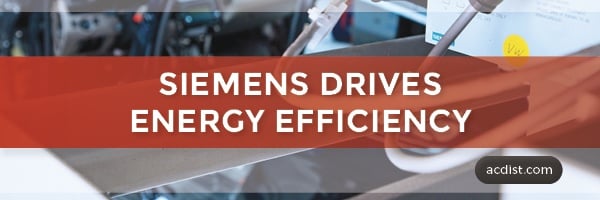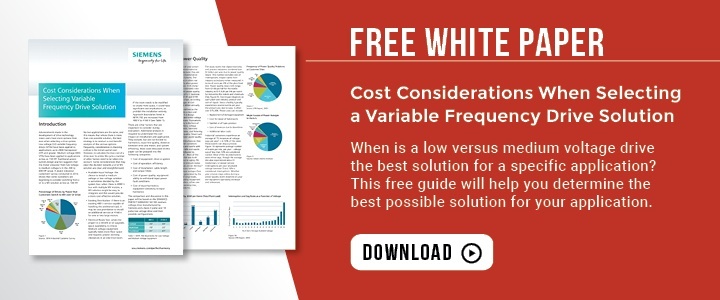
Did you know that drives account for almost 70% of the total energy requirement of every industrial plant? Even a small amount of inefficient loading can cause heavy economical losses to the plant and the parent company. However, with more efficient methods, greater profits and longevity in machines can be a result.
The use of mechanically controlled pumps, fans, compressors or drives in energy-intensive sectors is booming. The continuous operation directly accounts for a lowered efficiency and a higher environmental footprint. By introducing Siemens Drive Systems on a sustained basis, the life cycle of the entire plant will be rejuvenated and within no time, there will be a return on investment.
It is the operation cost and not the procurement that determines the right drive technology. Siemens, being the world’s top supplier of drive systems, has the ability to offer a comprehensive inventory of items through which one can drastically improve their plant’s efficiency.
But how does Siemens manage to do so? Siemens Drives have always been energy-efficient. With the introduction of new IES standards, Siemens has been quick to make the required upgrades and redesign its drives so that they would leave a minimal environmental footprint. By doing so, Siemens has taken a hold of excessive CO2 emissions, cutting off any excessive heat losses and improving the overall efficiency.
The true secret behind Siemens Energy Efficient Drive Systems is its holistic and synergetic approach to the problem. Siemens offers an Integrated Drive System in addition to the many motors, gearboxes, coupling, converters, etc. that has been tailored to fit the industry’s requirements of handling highly versatile loads.
Breaking down Siemens’ comprehensive portfolio:
Optimum InteractionSiemens SIMOTICS FD and SINAMICS G120P combo is a perfectly powerful drive system that is optimized for fans and pumps. Its efficiency standards are evident by the fact that this system can perform 35% better at controlling power losses compared to the standard operation equipment.
SinaSaveFollowing the EN50598 standards, SinaSave technology determines the energy saving potential of the entire system as well as its payback times based on the underlying conditions. The tool has a graphical interface through which the user can determine a particular region’s efficiency with pinpoint accuracy.
InsuranceSiemens offers a variant of these terms, by stating it very clearly that you may pay for the Drive Systems with the money you make from the saved costs. This should be enough to convince anyone about the capabilities of Siemens Integrated Drives.
Siemens Integrated Drive Systems are Siemens' answer to all kinds of problems, and the prime reason for its quick acceptance is its comprehensiveness, robustness and high-level of automation, all aspects that contribute to a highly efficient system.
The components of Siemens Drives that greatly contribute to an efficient system are:
Horizontal Integration
The value-added solution for pumps, compressors and fans is made up of a perfectly integrated solution that is designed on the basis of horizontal integration. All converters, motors, gearboxes, etc. are controlled from a single source, which greatly simplifies an overly complex system. This leads to accelerated implementation of innovative products, whose fundamental quantities such as currents, voltages and designs are synchronized with each other. The system also uses a closed loop speed control that brings both cost-effectiveness and long life. Through this and precise control of fluid flow machines, the energy consumption over the entire cycle is cut by 70%.
Vertical Integration
Totally Integrated Automation (TIA) is a concept that Siemens has embedded in each and every technology that makes it to the field. Through TIA, you can easily manage the entire network of Siemens devices and control applications ranging from process control to supervisory control. With this streamlined approach, any interface engineer can respond to an overly inefficient industrial unit and dispatch the appropriate resources with the help of SinaSave. By doing so, the online time of the entire industry can be retained, leading to greater productivity and more profits.
Life Cycle Integration
An industrial process not only requires a lowered downtime and an efficient control over heat losses, it also requires long-term serviceability. Siemens Drive Systems can reduce the maintenance cost by 15% as the system would automatically monitor the system for anomalies. Siemens PLM Software would allow the interface engineer to schedule the optimum time for long-term maintenance so that the system's efficiency isn’t hindered by extreme usage.
Through shorter project execution times, lowered procurement costs, longer up time and reduced manual interaction, Siemens Drives can achieve the target of greater efficiency. The ultimate answer would be higher profits and greater credibility in the market, which are reasons enough to switch over to these solutions.
Thanks for your time! Reach out to us if you would like to continue a discussion:



